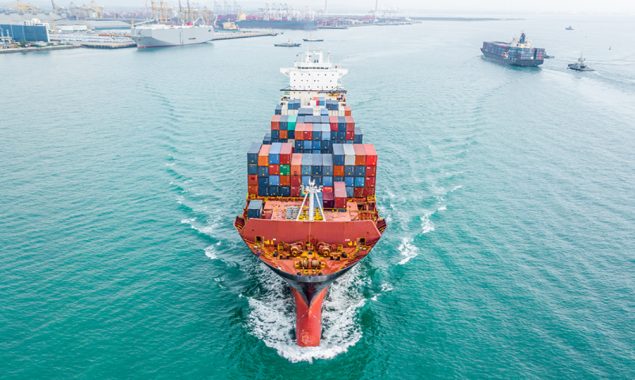Global trade to increase 23% in 2021: UNCTAD
UNITED NATIONS: Global trade will reach about $28 trillion this year, an...

Global trade to grow 5.4% in 2022. Image: Shutterstock
KARACHI: The cooling down of consumer spending, and reduced shipping congestion will result in global trade growing by 5.4 per cent in 2022, an Euler Hermes Global Trade report showed.
While there is a risk of a double-dip in the first quarter of 2022, Euler Hermes expects a normalisation of international trade flows in volume from the second half of 2022, it added.
“[The] overall, we expect global trade in volume to grow by 5.4 per cent in 2022 (after 8.3 per cent in 2021) and 4 per cent in 2023, and then gradually return to its pre-crisis average levels,” Françoise Huang, Senior Economist for Asia-Pacific at Euler Hermes.
“However, this comes at the expense of increased global imbalances. The US will register record-high trade deficits (around $1.3 trillion in 2022/2023), mirrored by a record-high trade surplus in China ($760 billion on average)”, he added.
A cooling down of consumer spending on durable goods, given their longer replacement cycle and the shift towards more sustainable consumption behaviors, along with less acute input shortages as inventories have returned to or even exceeded pre-crisis levels in most sectors will be the expected driving factors of the trade growth.
The reduced shipping congestion as global orders for new container ships have reached record highs, amounting to 6.4 per cent of the existing fleet, along with the planned $17 billion spending on port infrastructure in the US will play a key role in the growth of global trade.
The UAE is expected to record a growth of $64 billion in 2021 in exports, $35 billion in 2022 and $7 billion in 2023. The growth in the exports of goods and services comes after declining by $95 billion 2020.
After exceptionally strong performance since the second half of 2020, global trade of goods contracted in the third quarter, especially in advanced and emerging economies. However, advanced economies are suffering more from supply-chain bottlenecks.
Without production capacity increases and investments in port infrastructure, the normalisation of supply bottlenecks in Europe could be delayed beyond 2022 if demand remains above potential. The household equipment, consumer electronics, automotive and machinery and equipment sectors are most vulnerable to input shortages.
Despite the ongoing global supply-chain disruption, there is no clear trend of re-shoring or near-shoring of industrial activities so far. The only exception is the UK, which is likely to have faced disruptions due to Brexit.
It is estimated that the energy, electronics and machinery equipment sectors should continue to outperform in 2022. But the main export winner globally in 2023 should be automotive, thanks to the backlog of work and lower capex in 2021.
At the regional level, Asia-Pacific should continue to be the main export winner in the coming few years with over $3 trillion in export gains in 2021/2023.
The sectors that should exhibit the largest export gains in 2022 include energy and services, while automotive should be among the biggest winners in 2023. In terms of target markets, the largest export gains should be derived in India, Japan and China.
Catch all the Business News, Breaking News Event and Latest News Updates on The BOL News
Download The BOL News App to get the Daily News Update & Follow us on Google News.